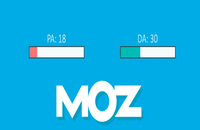Americans continue ignoring events in their backyard
Below the “revolutionary mystique” Chavez and his political and business environment “boliburgueses” are expert in doing business with oil from PDVSA. Under the strategy of “cold war” with the U.S., Putin and his circle of technocrats want to sell weapons and oil to all mankind regardless of ideology. Both feed each other: Putin needs Chavez (in addition to sell arms and technology) as a pawn of their functional strategy of “penetration” in the backyard with the aim to counterbalance the USA-EU influence in the economic and geopolitical spaces of Eurasia.
Chavez (Perim after leaving the discourse of “asymmetric warfare) is using its alliance with Russia to play in the intercapitalist war of big leagues for control of strategic resources and markets. Both are complementary: Chavez wants to grow up and leave the narrow confines of the “left government” in Latin America that allowed him to become an “enemy of straw” for short flight of the American Empire (to which gives the strategic Venezuelan oil).
[postpic=center]94095[/postpic]
Putin (who manages the real power behind Medvedev in Moscow), after which Russia was renamed as a world power in the Caucasus, wants to move forward against the lines of the unipolar Zionist Empire to dispute the economic and military hegemony.
But there is a substantial difference between the two: Putin fights a intercapitalist war (for areas of influence) with the regent USA-EU Empire, and Chavez just fight capitalist business combined with the revolutionary discourse show without any real content. And make no mistake: Neither Putin is Lenin, nor Chavez is Fidel Castro. And those roles are clear: One (Putin) is the puppeteer, and the other (Chavez) is the puppet. The company- by now – works wonders. While Washington for now, also “monitors” events.
Washington and the Department State publicly declared they are “worried” by the presence of a nuclear-capable Russian fleet off the coast of Venezuela, but in reality they are not so much.
Those that do are “worried” are the american military and oil industries that are losing more and more commercial spaces at the hands of Moscow in Venezuela.
[banner=center,http://www.usdemise.com]94093[/banner]
The White House and the Pentagon, know that Russia is playing a “disincentive” strategy in the US backyard (nuclearize the Caribbean Sea to press a nuclear negotiations in Eastern Europe), while Gazpron and the Russian military complex bill with strong currencies weapons, energy and the latest technology in Venezuela and Latin America.
Russia (an emerging capitalist power with nuclear power) is unable (or with willingness) to dispute a war by the military-economic control in Latin America with nuclear and conventional arsenal combined from the U.S. and the European Union. Moreover, nuclear arsenals are not to be used (which would convert the planet in ashes), but to deter and push negotiations.
The Kremlin is using only its “strategic military alliance” with Chavez and the ostentatious display of some of its nuclear units in the Latin American space to further position Russia within the “new world order” of the capitalist system, with oil, weapons and energy as strategic tools.
For some Russians analysts, Latin America accounts for Moscow only as a “deterrent” theater to counterbalance the “Great Game” to regain their positions of power held by U.S. in the former Soviet space.
That explains the “silence” and caution of Washington against the summit Medvedev-Chavez conducted between Wednesday and Thursday, where both presidents supervised a joint naval exercise between Russia and Venezuela.
Chavez just in case of any doubts left it clear his irrevocable decision not to cut (under any circumstances) the supply of crude oil to the U.S. and not to alter the US-Venezuela commercial relations, whose figure is rounds U.S. $ 50,000 million.
USA is the biggest customer for Venezuelan exports, particularly oil.
Venezuela sends more than one million barrels of crude daily to the U.S. market, in large part to refineries it owns that feed the system of Citgo service stations, also owned by Venezuelan.
In addition, the U.S. comes close to one third of Venezuelan imports.
That did not stop Chavez from receiving in Caracas to the Russian president, Dimitri Medvedev, as a “major strategic ally.”
On board the destroyer Admiral Chabanenko, anchored in La Guaira, 20 kilometers north of this capital, the presidents Medvedev, Russia, and Chavez of Venezuela, on Thursday launched military exercises that fleets of war of their countries carried out together in waters of the Caribbean.
The operations that will last for a week, which involved the largest nuclear-powered cruiser in the world, Peter the Great, marking the return of Russian combat ships to the Caribbean Sea, which had no incursion since the days of the Cold War, when the former Soviet Union maintained a close relationship with its ally Cuba.
According to Humberto Marquez a writer for the agency IPS, rather than acts of war they seem as a backdrop for the trip by Medvedev to Lima, Rio de Janeiro, Caracas and Havana, encouraging another kind of maneuvers, economic and trade, to exploit investment opportunities , Trading and selling of technology and weapons that this region offers to Russia.
“The Russians come in sales plan to make money in this region of the world where the prices of its weapons appear to be competitive,” was told to IPS by venezuelan Rocío San Miguel, who heads the Venezuelan NGO Watch for Security and defense.
In Venezuela, “the Russians come to review the implementation status of arms contracts for U.S. $ 6.000 million subscribed until 2008, and with prospects of reaching U.S. $ 10.000 million by 2015,” said San Miguel.
Humberto Marquez says Venezuela has acquired or agreed to the purchase of Sukhoi fighter fleets of helicopters and MI, 100,000 Kalashnikovs rifles and installation of a factory for these rifles and ammunition, ships, submarines, transport aircraft and radar systems.
“The region is now one of the largest customers of Russian weapons in the world. The sales went from U.S. $ 300 million in 2001 to U.S. $ 3.000 million in 2006 and are on the rise,” noted Moises Naim, editor of the magazine U.S. Foreign Policy international issues cited by IPS.
“Of course the U.S. support to Georgia in the recent war in the Caucasus was irritating and encourages Moscow to show that they too can get to annoy the Yankees in their neighborhood. But for the families, partners and friends in the Kremlin these are not the accounts that really count, but the bank, “said Naim. The Russian-Latin American trade has grown almost 30 percent on-year in the last three years and reached 15,000 million dollars in 2008, according to Moscow.
Russian foreign minister, Sergei Lavrov, stated clearly that the goal of his country in Latin America is to “enhance the export of technology and collaboration in the field of energy, production and transportation of gas and oil, construction machinery, transportation and metallurgy industries, the peaceful use of nuclear energy and space exploration.”
Medvedev began his tour in the region attending the summit of the Forum of Asia-Pacific Cooperation (APEC, for its acronym in Spanish) that was held in Lima, then traveled to Rio de Janeiro to meet with his Brazilian counterpart Luiz Inácio Lula da Silva.
The Russian president praised Brazil as their “main trading partner in Latin America” and the two presidents signed agreements to abolish visas – and expedite business travel – and space cooperation, as Moscow helps Brasilia to develop their own satellite launch vehicle.
There is a strong Russian interest in – Marquez says to IPS – to participate as a supplier of arms to Brazil, as well as in the oil and the laying of pipelines in that country.
With Cuba, which is its tenth largest trading partner Russia, there is a trade that also wants to strengthen Medvedev, and which last year reached $ 363 million. The prospects for increasing that figure are clear, because much of the Cuban industry and its car fleet is of Soviet origin.
The signals that Russia delivers indicate that returns to the Caribbean and Latin America “to stay”, and more if the maneuvers along with reaffirming its role as a frontline player in global politics can make progress in bringing business to enable it to invest in the expansion and modernization of its economy.
With Venezuela, Russia has signed dozens of agreements on the last biennium. Chavez visited Moscow twice in 2008 and will again next year. However, during the visit to Caracas by Medvedev eight other conventions were signed.
These include agreements to facilitate the participation of Russian companies in the exploration and exploitation of hydrocarbons in the south-eastern Faja del Orinoco, to provide assistance to light industry in Venezuela and to peaceful nuclear cooperation.
As can be seen, with the “cold war” as background dressing, the Kremlin has launched a “commercial landing” in Latin America that has not yet received a concrete response from Washington which remains in “radio silence”.
Chavez went back to declare that Russia is a “strategic ally” and briefed on the forthcoming entry into the country for a new defensive system with Russian long-range rockets capable of reaching targets located about 200 kilometers.
The summit of both presidents, with the naval exercises as decoration – happened weeks after Washington announced the reactivation of its Fourth Fleet, which is already sailing the waters of the Caribbean.
The revival of the U.S. Fourth Fleet to patrol Latin American waters is a clear signal – according to regional experts – that the U.S. is launching a pre-signal to those who dare to put their feet on the strategic resources of the region (oil, water and biodiversity) they feels like theirs.
So far, Putin and Chavez are only pushing the Empire and playing a business with the “cold war”.
Meanwhile, we have to wait and see how Washington reacts, the other central protagonist of the capitalist novel disguised as “cold war”.
[banner=center,http://www.usdemise.com]94093[/banner]







